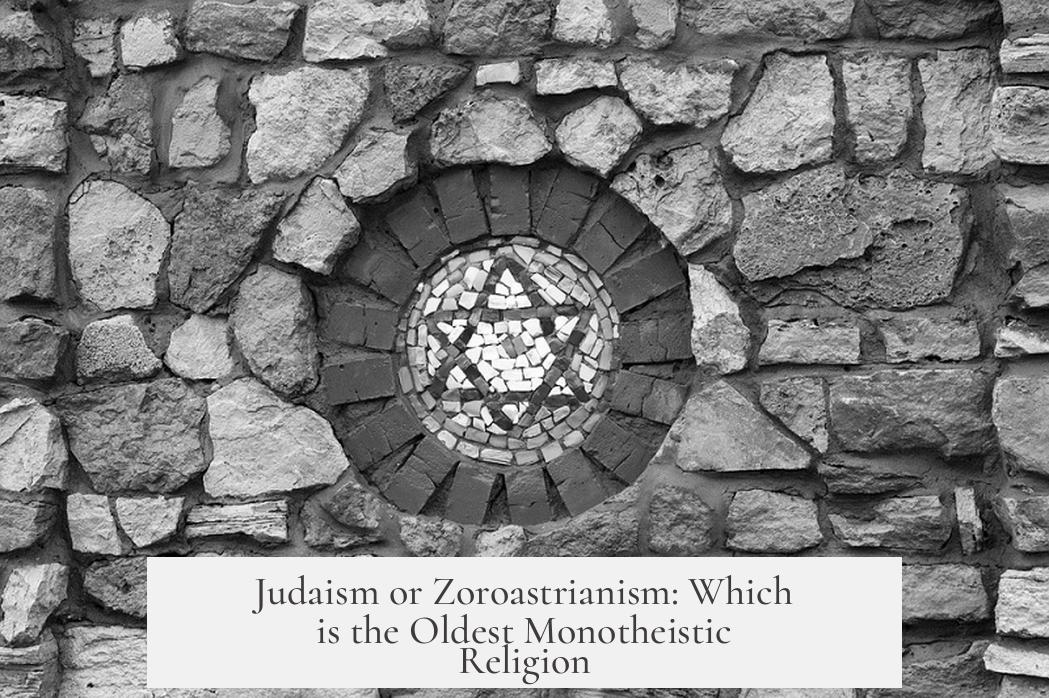Judaism and Zoroastrianism both cannot be definitively called the world’s oldest monotheistic religion. Both religions likely evolved from earlier polytheistic beliefs before adopting monotheistic elements. Additionally, an earlier form of monotheism, Atenism, existed briefly in ancient Egypt before either Judaism or Zoroastrianism took shape.
Monotheism generally means belief in a single, all-powerful deity. However, determining when monotheism truly began is complex. Definitions of monotheism vary. Some scholars argue early Judaism and Zoroastrianism retained polytheistic traits at first. Thus, they did not start strictly as monotheistic faiths.
Judaism emerged in the ancient Near East with origins linked to the Israelites. Early Israelite religion included several deities and spirits before focusing on Yahweh as the sole God. The shift towards strict monotheism developed gradually over centuries, especially after the Babylonian exile (6th century BCE). This transition to exclusive worship of Yahweh is well documented in biblical texts and historical evidence.
Zoroastrianism, associated with the prophet Zoroaster (Zarathustra), also underwent evolution in belief systems. Early Iranian religious traditions involved multiple gods and spirits. Zoroaster preached worship of Ahura Mazda as supreme creator and uncreated god. Yet, some scholars note retained dualistic elements, such as the opposing figure Angra Mainyu (destructive spirit), challenge labeling Zoroastrianism strictly monotheistic. The lines between monotheism and dualism blur here.
The dating of these religions is essential. Zoroaster’s life is commonly placed around the 2nd millennium BCE or early 1st millennium BCE, though dates remain debated. Judaism’s monotheistic consolidation postdates early Israelite polytheism. Despite this, Zoroastrianism’s monotheistic character might have appeared around or after early monotheistic Judaism practices started to form.
Adding a layer to this debate is Atenism, the religious reform of Pharaoh Akhenaten in Egypt circa 1350 BCE. Atenism involved worshiping Aten, a single solar disk deity, and is considered one of the earliest recorded instances of monotheistic worship. However, Atenism was short-lived and ended with Akhenaten’s reign. It did not directly influence later major monotheistic faiths, but it shows that monotheistic ideas appeared independently and earlier than classical Judaism or Zoroastrianism.
The main reasons this question remains unsettled include:
- Variations in defining monotheism strictly versus inclusive monolatry (worship of one god without denying others).
- Historical development of both Judaism and Zoroastrianism from earlier polytheistic contexts.
- The existence of prior, independent monotheistic-like religions such as Atenism.
Scholarly discussions often emphasize that neither Judaism nor Zoroastrianism started fully monotheistic. Both incorporated and gradually moved toward monotheism. The presence of dualistic elements in Zoroastrianism further complicates the classification.
For deeper exploration, several scholarly analyses online discuss polytheistic origins and monotheistic evolution. They include detailed examinations of religious texts, archaeological findings, and historical contexts:
- Discussion on Zoroastrianism’s polytheistic aspects
- Monotheism evolution in early religions
- Historical context of pre-Nicaea religions
| Aspect | Judaism | Zoroastrianism | Atenism |
|---|---|---|---|
| Initial Religious Nature | Polytheistic elements (multiple gods, spirits) | Polytheistic and dualistic traits | Explicit monotheism (worship of Aten) |
| Time Period | Israelite religion began ~2nd millennium BCE, monotheism solidified ~6th century BCE | Likely 2nd-1st millennium BCE, dates debated | ~1350 BCE, short-lived reign |
| Monotheistic Claim | Gradual exclusive worship of Yahweh | Supreme god Ahura Mazda with opposing spirit | Single deity Aten worshiped exclusively |
| Legacy | World major monotheistic religion roots | Influenced Persian and later religions | No lasting institution after Akhenaten |
This comparative view helps illustrate why the question lacks a definitive answer.
- Both Judaism and Zoroastrianism arise from polytheistic backgrounds.
- Monotheism in these faiths is a process, not an original feature.
- Atenism predates both but did not persist long-term.
- Strict definition of monotheism affects labeling of “oldest”.




